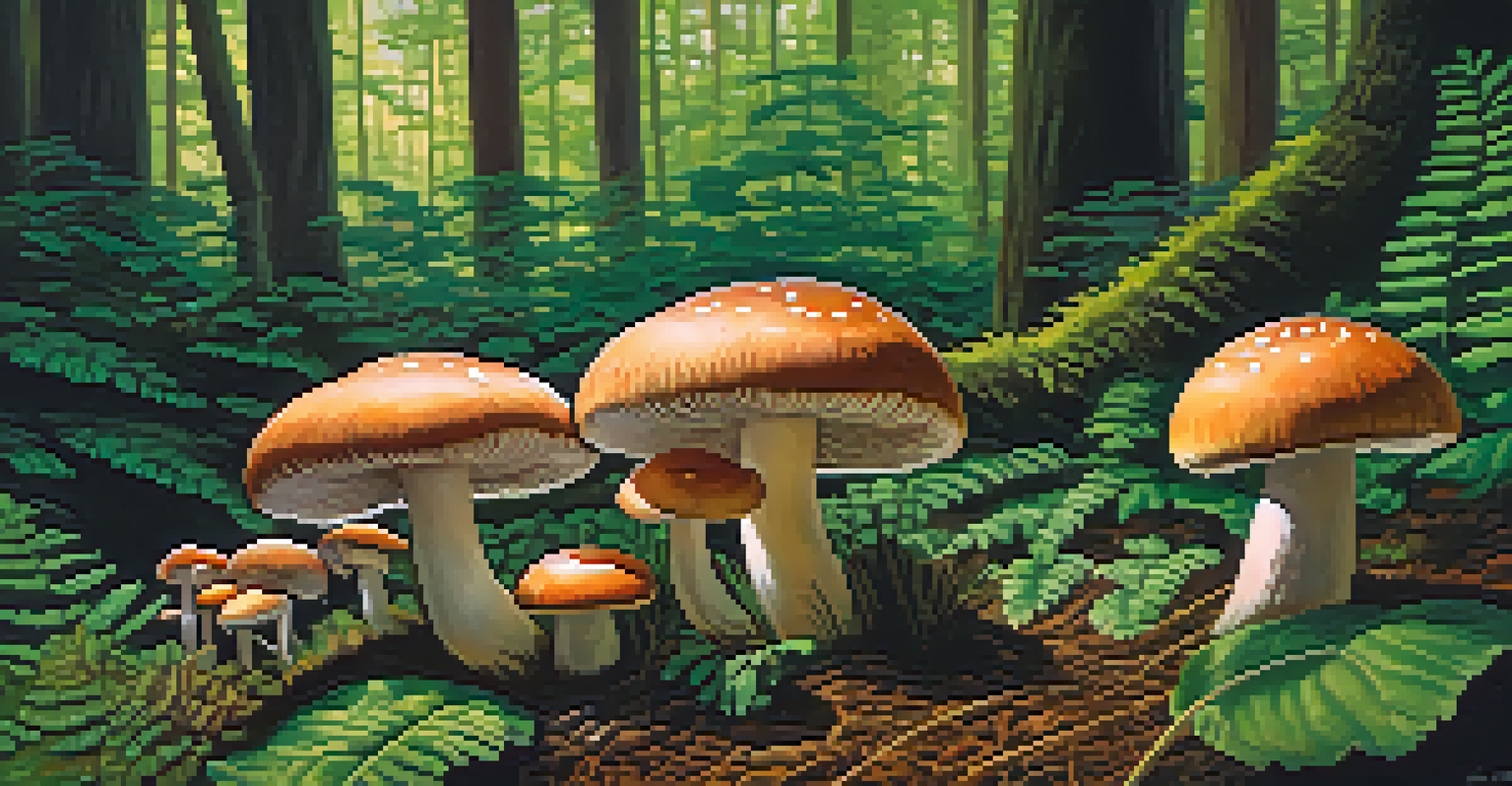Understanding Hallucinogens: A Psychoeducational Approach

What Are Hallucinogens and How Do They Work?
Hallucinogens are a diverse group of substances that alter perception, mood, and cognitive processes. They primarily affect the brain's serotonin receptors, leading to changes in how we perceive reality. Common examples include LSD, psilocybin (magic mushrooms), and mescaline, each offering unique experiences.
The psychedelic experience can be profoundly transformative, leading individuals to discover new facets of themselves and the world around them.
These substances can induce vivid visual and auditory hallucinations, emotional shifts, and a sense of altered time. The experience can vary significantly based on the individual's mindset, environment, and the specific substance used. Understanding these factors is key to grasping how hallucinogens affect different people.
While some users seek hallucinogens for recreational purposes, others explore them for spiritual or therapeutic insights. This duality in use is essential to recognize as we delve deeper into their cultural and psychological implications.
Types of Hallucinogens: A Closer Look
Hallucinogens can be categorized into two main types: classic hallucinogens and dissociative hallucinogens. Classic hallucinogens, like LSD and psilocybin, primarily alter sensory perceptions, while dissociative hallucinogens, such as PCP and ketamine, create feelings of detachment from reality and one's body.

Each type interacts differently with the brain's chemistry, leading to distinct experiences. For instance, while LSD can induce intense visual distortions, ketamine might lead to a dream-like state where users feel disconnected from their surroundings.
Hallucinogens Alter Perception
Hallucinogens significantly affect perception, mood, and cognition by interacting with serotonin receptors in the brain.
Recognizing these differences is crucial for anyone considering their use, as it informs expectations and potential risks associated with each type of hallucinogen.
The Historical Context of Hallucinogens
Hallucinogens have a rich history, often intertwined with cultural and spiritual practices. Indigenous tribes have used substances like peyote and ayahuasca for centuries in religious ceremonies to connect with the divine and understand their place in the universe.
Hallucinogens can help us understand the mind, the nature of consciousness, and the human experience in ways we have yet to fully explore.
In modern history, the 1960s saw a surge in interest in hallucinogens, particularly among counterculture movements seeking to expand consciousness. This period sparked debates about their potential benefits and dangers, leading to a complex relationship with these substances.
Understanding this historical backdrop provides valuable insight into how hallucinogens have been perceived and used across different societies and eras.
Potential Therapeutic Uses of Hallucinogens
Recent research has rekindled interest in the therapeutic potential of hallucinogens, particularly for mental health conditions like PTSD, depression, and anxiety. Studies suggest that substances like psilocybin can help patients process trauma and improve emotional well-being.
These substances may facilitate deep introspection and emotional release, allowing individuals to confront and address underlying issues. However, it’s essential for such treatments to be conducted in controlled, supportive environments to mitigate risks.
Understanding Hallucinogens
Hallucinogens alter perception and cognition by primarily affecting the brain's serotonin receptors, with experiences varying based on individual factors.
As the scientific community continues to explore these possibilities, there’s a growing conversation about how hallucinogens could reshape our understanding of mental health treatment.
Risks and Side Effects of Hallucinogen Use
While hallucinogens may offer therapeutic benefits, they are not without risks. Users may experience anxiety, paranoia, or a 'bad trip,' which can lead to lasting psychological distress. Understanding these potential side effects is crucial for informed decision-making.
Moreover, the unpredictable nature of hallucinogen effects can pose dangers, particularly in uncontrolled settings. Users might engage in risky behaviors or experience overwhelming sensations that lead to physical harm.
Being aware of these risks emphasizes the importance of responsible use and the need for further research into safe practices and harm reduction strategies.
Hallucinogens in Popular Culture
Hallucinogens have significantly influenced art, music, and literature over the decades. From the psychedelic rock of the 1960s to contemporary films exploring altered states, these substances have shaped creative expression and cultural narratives.
Artists and musicians often describe their experiences with hallucinogens as transformative, providing new perspectives that fuel their creativity. This cultural resonance highlights a fascination that extends beyond mere recreational use.
Therapeutic Potential Explored
Recent research highlights the potential of hallucinogens like psilocybin in treating mental health conditions such as PTSD and depression.
Understanding this cultural impact can help demystify hallucinogens and encourage more open discussions about their place in society.
Navigating the Legal Landscape of Hallucinogens
The legality of hallucinogens varies widely across different regions, with some places decriminalizing or legalizing certain substances for medicinal use. For example, psilocybin is gaining acceptance in several jurisdictions, reflecting a shift in societal attitudes toward these substances.
However, the legal framework surrounding hallucinogens remains complex and often confusing. It’s vital for individuals to stay informed about local laws to avoid legal repercussions while exploring these substances.

As public perception continues to evolve, ongoing discussions about regulation and safety will likely shape the future landscape of hallucinogens.